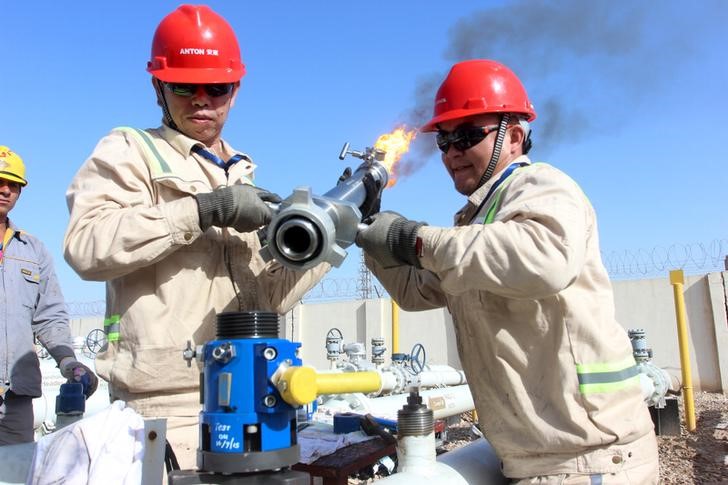By Gina Lee
Investing.com – Oil was down on Wednesday morning in Asia. A prospective tight supply, thanks to a pipeline outage and geopolitical troubles in Russia as well as the United Arab Emirates (UAE), gave the black liquid a fourth consecutive day of gains.
Brent oil futures rose 1.20% to $88.56 by 11:26 PM ET (11:26 AM GMT) and WTI futures jumped 1.28% to $85.92. Both Brent and WTI futures were near their highest levels since October 2014.
Turkish state pipeline operator Botas said on Tuesday that it cut oil flows on the Kirkuk-Ceyhan pipeline after an explosion, the cause of which is not yet known. This pipeline carries crude from Iraq, the second-largest producer in the Organization of the Petroleum Exporting Countries (OPEC), to Turkey's Ceyhan port for export.
The loss in supply comes in an already tight market, with fuel demand holding up better than expected amid the spread of the omicron COVID-19 variant globally.
Tensions between the U.S. and Russia, the second-largest oil producer globally, added to tensions in the UAE, OPEC's third-largest producer, also contributed to supply worries.
U.S. Secretary of State Antony Blinken will meet Russian foreign minister Sergey Lavrov in Geneva on Friday in a bid to resolve tensions over Ukraine. Meanwhile, the UAE on Tuesday called for a meeting of the United Nations Security Council over an attack on Abu Dhabi on Monday by Yemen's Houthi movement.
These tensions, and the prospect of supply disruptions, come just as OPEC and allies (OPEC+) is struggling to hit its target of adding 400,000 barrels per day of supply each month.
"OPEC+ is falling short of hitting their production quotas and if geopolitical tensions continue to heat up, Brent crude might not need much of a push to get to $100 a barrel," OANDA analyst Edward Moya said in a note.
Meanwhile, jet fuel consumption is rising with growth in international flights, while road traffic is much higher than the same time in 2021, Commonwealth Bank commodities analyst Vivek Dhar said in a note.
"OPEC+ supply constraints and the ongoing increase in global oil demand will likely keep oil prices well supported in coming months," Dhar’s note added.
Investors now await U.S. crude oil supply from the American Petroleum Institute, due later in the day.
